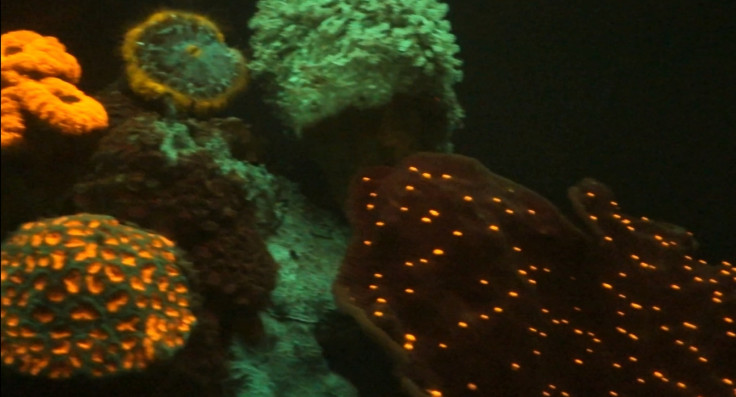'Unexpected' rainbow of fluorescent colours discovered in corals in depths of Red Sea [Video]
A group of scientists from the University of Southampton, Tel Aviv University and the Interuniversity Institute for Marine Sciences (IUI), Israel, have discovered glowing corals that display a wide array of colours in the deep water reefs of the Red Sea.
The team were studying corals which were more than 50m below the surface of the sea and noticed that many of the species glow fluorescent colours such as red or yellow, according to the findings published in PLOS One.
It was an unexpected encounter as the corals closer to the surface in the same reed contained only green fluorescent pigments. Shallow water corals are known for their fluorescent pigments as they act as a sort of sunscreen for the corals and their symbiotic algae.
However, usually when they are deep under water, the sunlight struggles to reach them and they fail to sustain the photosynthesis.

Jörg Wiedenmann, professor of Biological Oceanography and head of the University of Southampton's Coral Reef Laboratory, said: "These fluorescent pigments are proteins. When they are illuminated with blue or ultraviolet light, they give back light of longer wavelengths, such as reds or greens.
"Their optical properties potentially make them important tools for biomedical imaging applications, as their fluorescent glow can be used to highlight living cells or cellular structures of interest under the microscope. They could also be applied to track cancer cells or as tools to screen for new drugs."
Gal Eyal, PhD candidate at the IUI, added: "Corals from these so-called mesophotic reefs are less well studied since they are beyond the depth limits of standard Scuba diving techniques. Advances in technical diving have enabled us to explore coral communities from these deeper waters.
"Since only the blue parts of the sunlight penetrate to depths greater than 50m, we were not expecting to see any red colouration around. To our surprise, we found a number of corals showing an intense green or orange glow. This could only be due to the presence of fluorescent pigments."
© Copyright IBTimes 2025. All rights reserved.






















